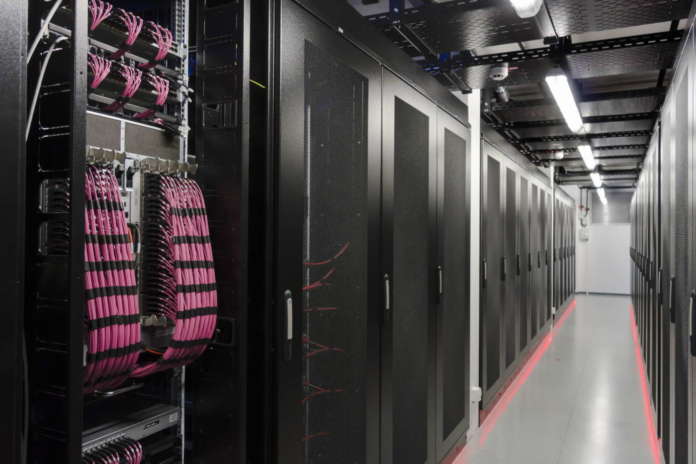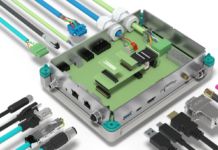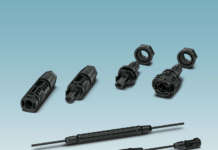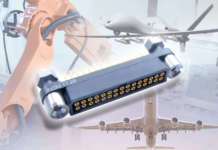Cloud computing, big data and IoT are contributing to the need to transmit more and more data. IT applications in office and industrial buildings need ever higher bandwidths. This could easily be achieved with fiber optic cables. But the complicated handling has so far made many users hesitate. A new plug-in principle now lowers this barrier to entry.
The digitization of all areas of life is advancing. Artificial intelligence and machine learning based on big data are just one aspect of this trend. Applications from the cloud are now commonplace, home schooling, home office and video conferencing instead of school, office and business trips are another aspect that has gained in importance over the past year in particular. But one of the consequences of digitization is always the same: data volumes are growing, and with them the bandwidth requirements in data networks.
Copper cable is slowly reaching its limits. This is not only true for DSL connections at home - Deutsche Telekom is now also moving away from copper and plans to install only fiber optics in the near future. Fiber optics are already widely used in data centers. Building cabling, networks in hospitals and doctors' offices, and the infrastructure of research institutions are also increasingly being implemented using optical fiber. With 5G, fiber optics are even finding their way onto antenna masts and into the backbone of industrial production.
Bandwidth versus diameter
Many workstations still need to upgrade to fast Gigabit Ethernet with up to 10 GB/s. This can still be achieved with high-quality copper cables. But at the latest on the next network level, when the data from numerous users comes together, things get tight. Simply increasing the number of copper cables is only possible to a limited extent. For one thing, cable runs have only limited capacity, and for another, electromagnetic interactions between the copper cables can disrupt data transmission if too many cables are too close together. These effects can even be used to eavesdrop on the data transmission on the copper cable without being noticed.
The thin glass fibers offer many times the bandwidth of copper cables with much smaller cable cross sections. This means that standard transmission rates of 40 to 100 GB/s are no problem. At the same time, much longer distances can be bridged without intermediate amplifiers. And data security is also better because there are no radiation effects. In some applications, the lower weight or the possibility of use in potentially explosive areas also play a role, since fiber optic cables do not transport any electrical energy, and thus neither flying sparks nor grounding problems are a factor.
Complex mating operations
In view of these undeniable advantages of fiber optics, widespread use would be expected. But the handling of fiber optics has so far slowed down the spread of this powerful network technology. Know-how and precision are required not only for installation. Each individual plug-in process has also been accompanied by time-consuming inspection and cleaning. If the corresponding specifications are not observed, transmission problems, instabilities or even damage to the connection system can occur. This can lead to costly troubleshooting and repairs.
The cause lies in the sensitive technology. Even the smallest particles, such as dust grains or pollen, that penetrate the connector can inhibit the light beam to such an extent that data transmission suffers or becomes impossible. Error-free, reliable installation is therefore only possible with trained specialist personnel. In view of the increasing demands on reliability and availability of network access, this represented a serious disadvantage.
Easier handling with EBO
From 3M now comes the EBO (Expanded Beam Optical Interconnec) connector concept, which offers a decisive advance. The Expanded Beam Connection (EBC) first expands and then refocuses the light beam as it passes from one fiber to another. Interference from particles is minimized, as pollen or a grain of dirt that has penetrated the fiber only blocks a small part of the enlarged light area. The light beam is thus no longer completely blocked, but only slightly weaker. This means that the ability to transmit data is fully retained.
The new concept also shows its strengths when it comes to the decisive quality criteria of an optical fiber connector system. On the one hand, it causes a significantly lower insertion loss (IL), on the other hand it shows a high return loss (RL).
Flexible plug-in technology
The redesigned optics allow the connector concept to be used for both singlemode and multimode fiber optics. According to the manufacturer, the insertion loss for single-mode applications is less than 0.70 dB, while the return loss is over 55 dB. These values are maintained over several hundred mating cycles.
In its standard version, the ferrule accepts 12 single-mode or multimode fibers. However, the system is scalable and allows up to 192 fibers to be connected. Rosenberger OSI entered into a close cooperation with 3M regarding this new technology at an early stage and carries the corresponding basic connectors of the manufacturer, but also develops its own connector systems in cooperation with its customers. There are still many applications with different requirements that can be realized with this connector concept, one is sure at Rosenberger OSI.
Efficiency in production and use
The plug-in concept aims to make handling easier while still ensuring maximum reliability of the network connections. Even the connector shows that efficiency was the focus of development. Instead of ceramics, a ferrule made of high-precision injection-molded plastic with grooves is used; there are no holes. Inside the injection-molded part is the SLR collimating lens, which expands the beam and also refocuses it.
The fibers can be automatically positioned and glued into the injection-molded ferrule. Even without the use of guide pins, they are fixed in such a way that deviation in fiber alignment is virtually impossible. There is also no need for time-consuming polishing of the fiber ends, and damage to the fibers through mutual contact is also ruled out.
At the same time, this mating concept reduces the amount of work previously involved in each mating process. And last but not least, it also reduces the demands on the personnel carrying out the cabling - without compromising the operational reliability of the fiber optic network.
Suitable for numerous applications
At present, applications are focusing on complex backplane cabling, for example. But the increase in IoT applications with correspondingly powerful networks, for example in building cabling, is also a driver for the use of EBO technology. Further applications are already emerging, as the new technology shows its strengths particularly in harsh environments.
Compared to other connector concepts, it is less sensitive to dust and also to vibrations. For example, it is particularly suitable for the use of 5G and edge computing in industrial production. Fiber optics are the only way to achieve the high bandwidths and low latencies in the backbone that are needed for Industry 4.0 in the long term.
The 5G networks themselves are also worth mentioning; FTTA (Fiber to the Antenna) is needed here. Insensitive networks with ever higher bandwidths are also in demand in mobile applications, for example in railroads and aircraft, where considerable vibrations occur during operation. Rosenberger OSI develops suitable connector systems for such applications together with the customers according to their individual requirements.
Conclusion
Together with the ongoing digitization of all areas of life and the economy, the use of fiber optics will continue to grow in importance, if only because of the higher bandwidths that can be realized. The advantages - in addition to the bandwidth, for example, the smaller diameter and the bridging of greater distances - have until now been countered by the complicated handling of plug-in processes. It was not only the complex handling, which takes a lot of time, that acted as a brake. It was also the know-how required for this, which restricted the circle of specialist personnel who could be entrusted with such tasks.
This is precisely where the easier-to-use Expanded Beam Optical Interconnect technology comes in. It opens up many new areas of application for high-bandwidth fiber optic technology. Faster mating processes and fewer restrictions on the selection of suitable personnel translate into lower costs and shorter project runtimes. This means that nothing stands in the way of the advance of this technology.





